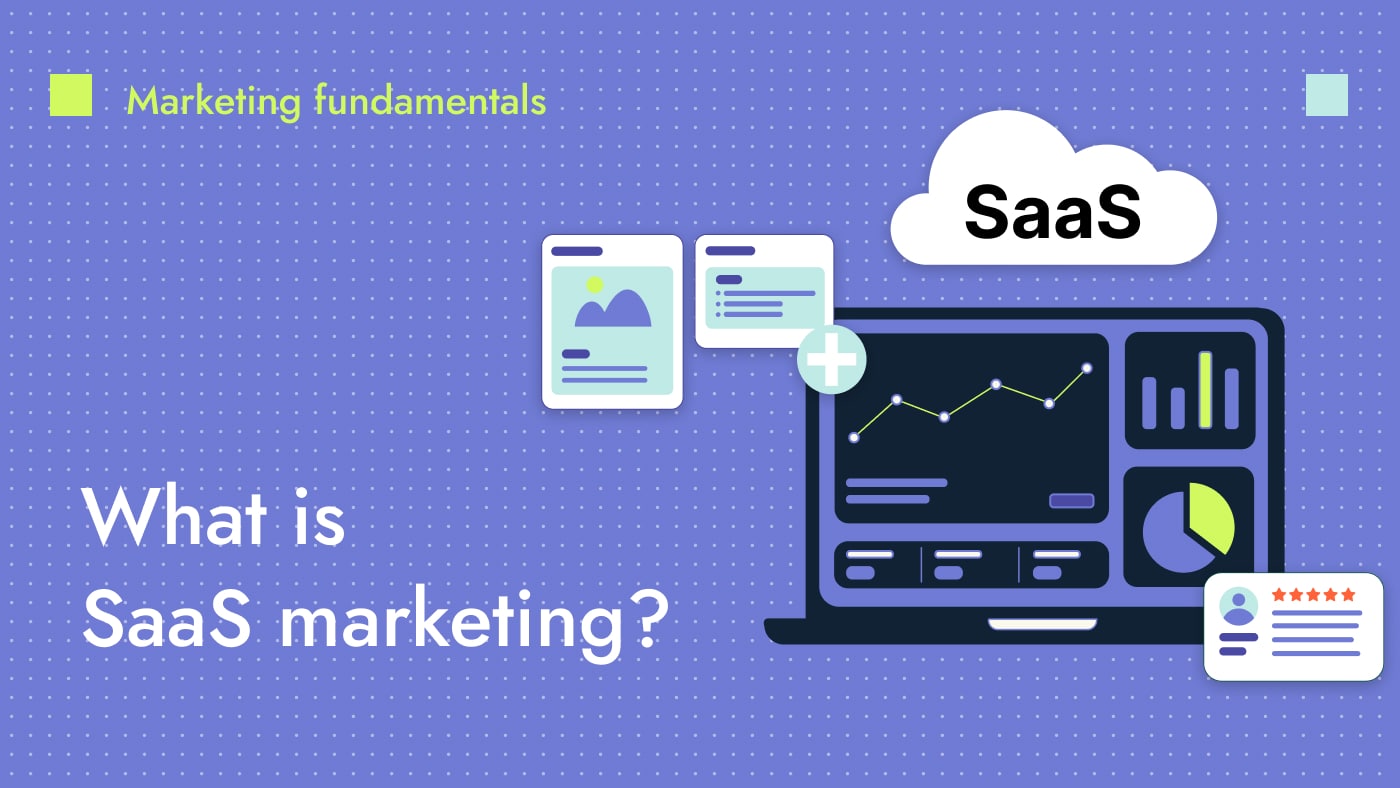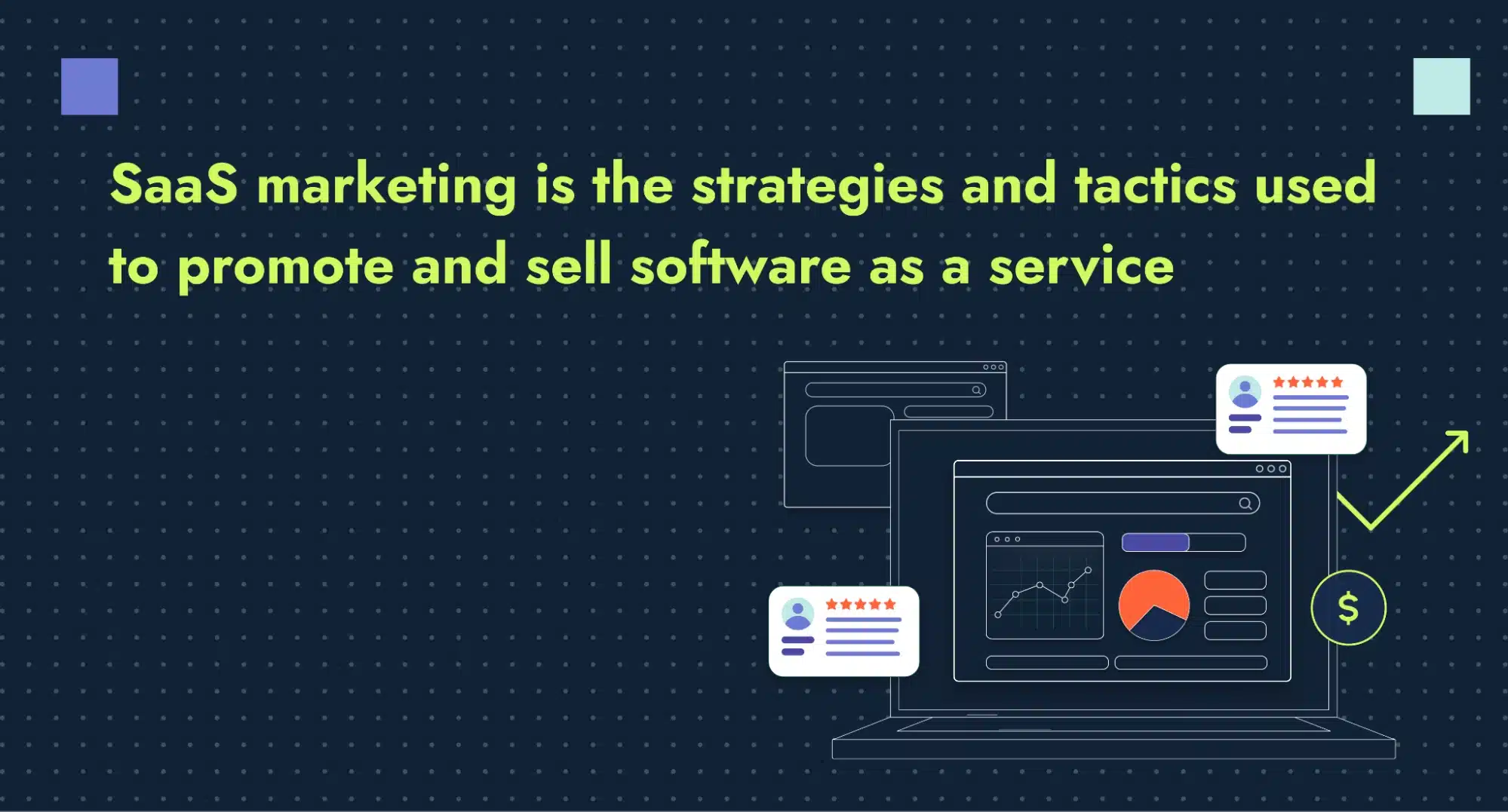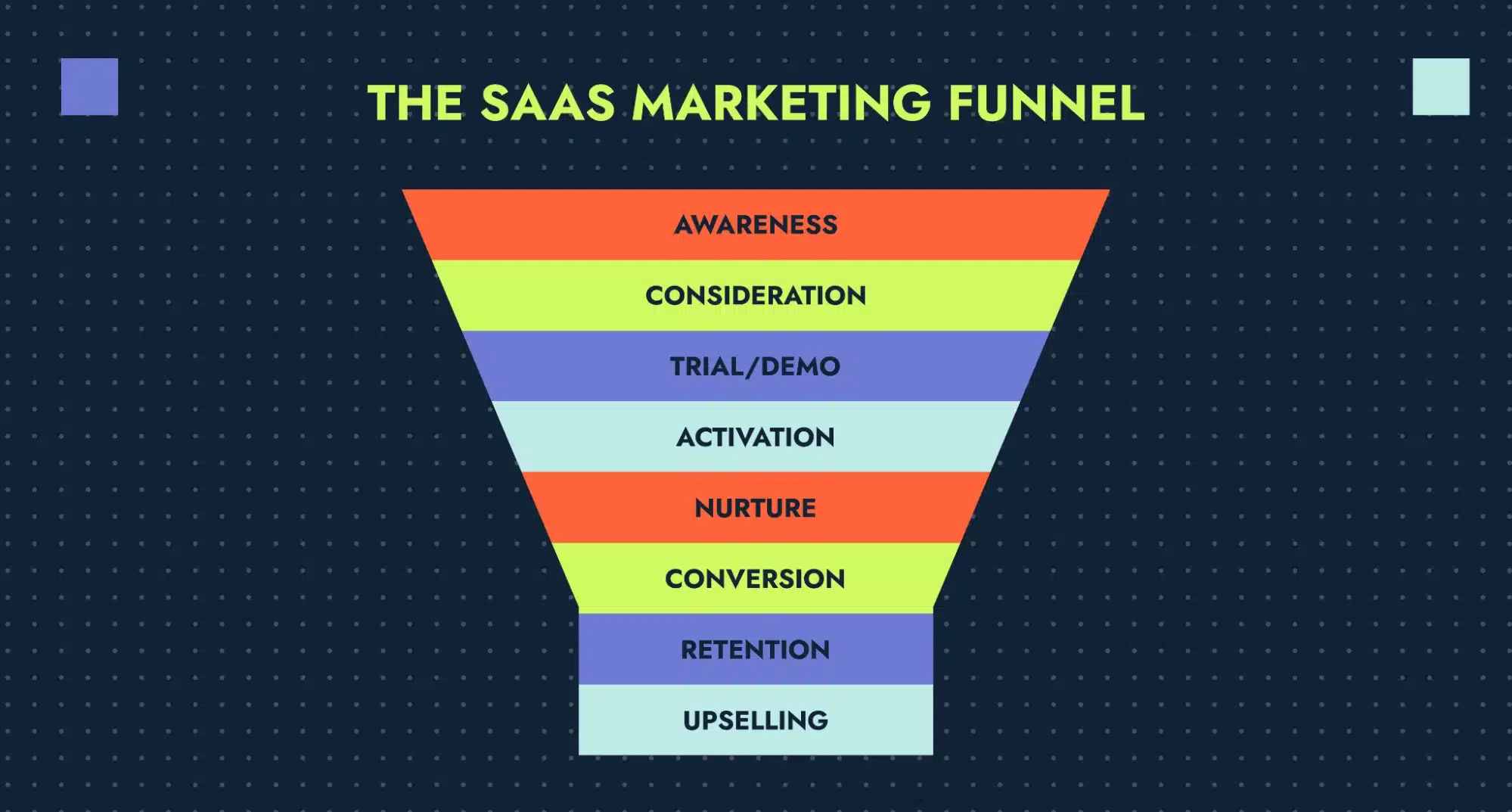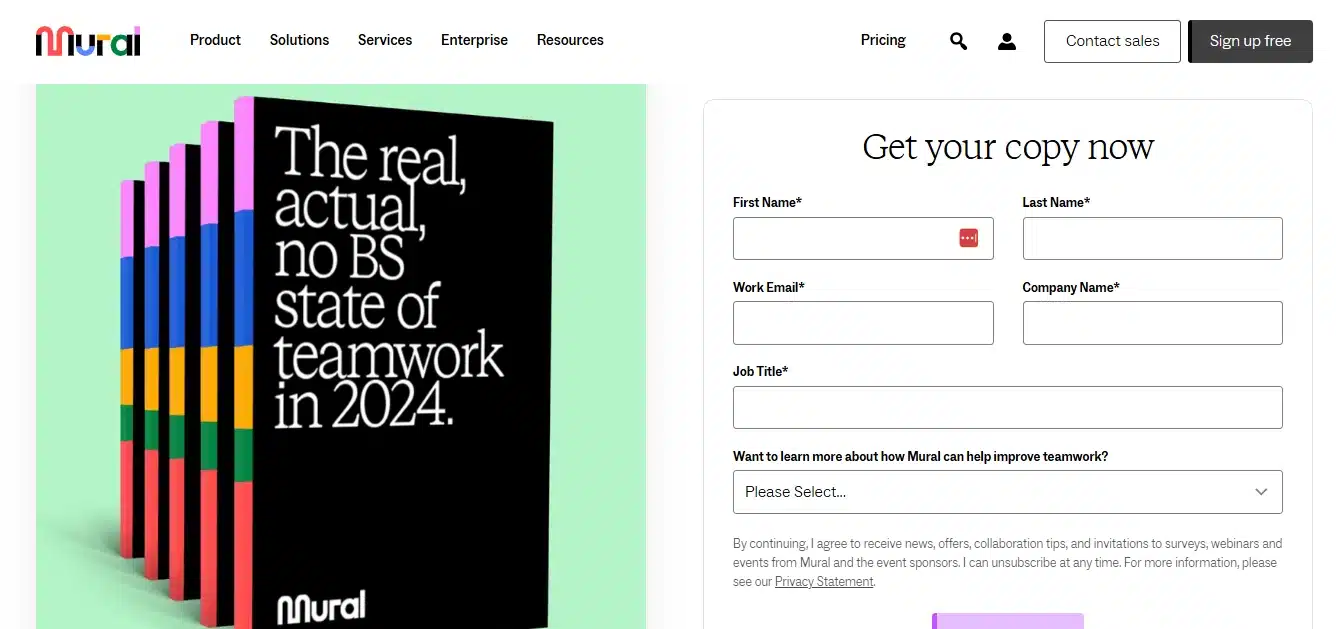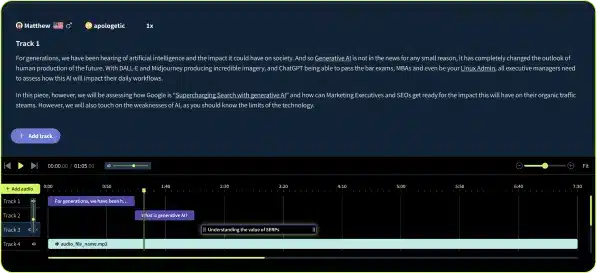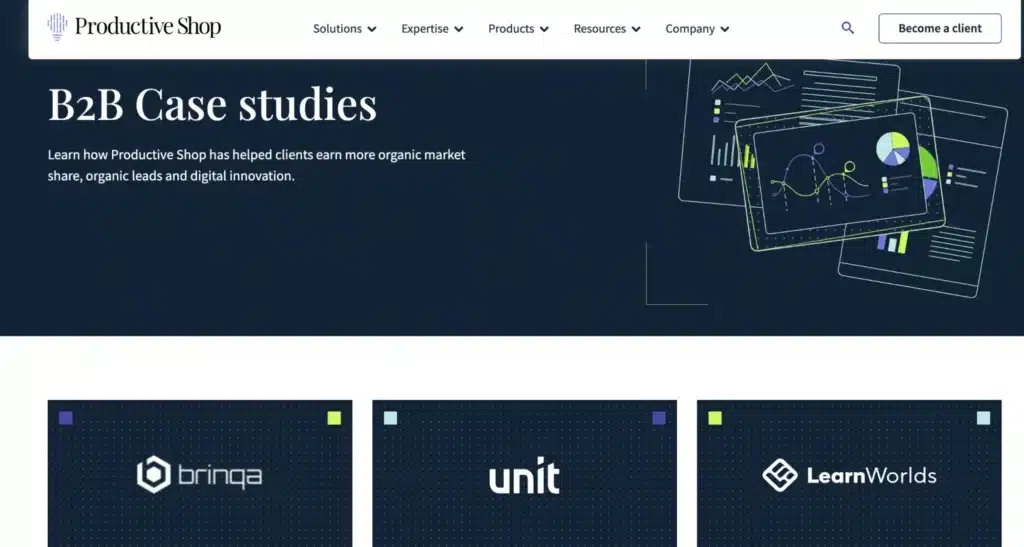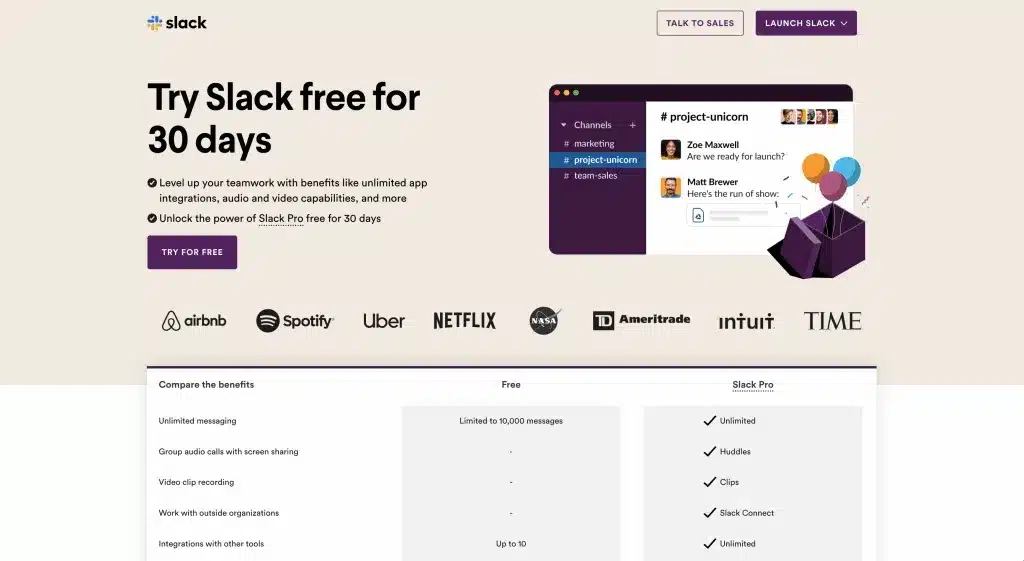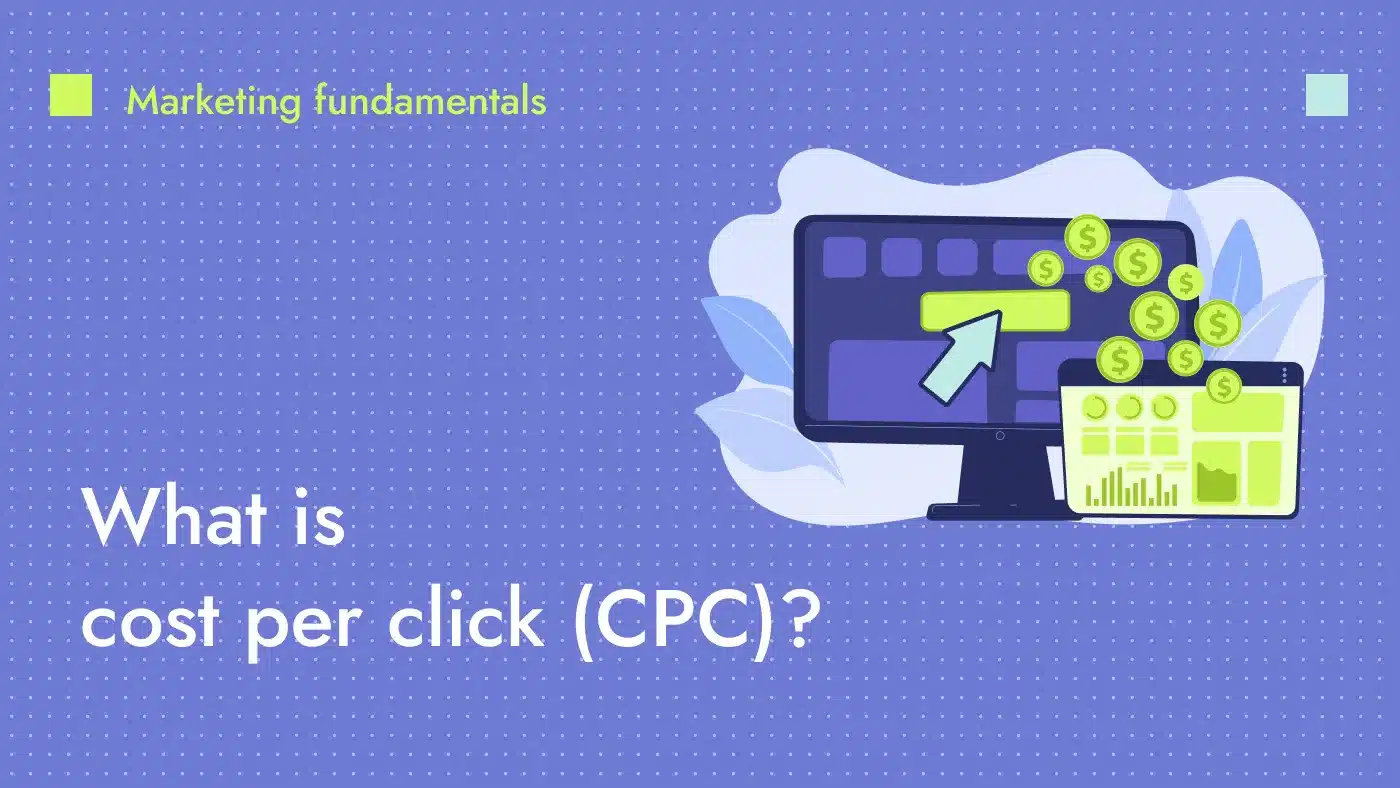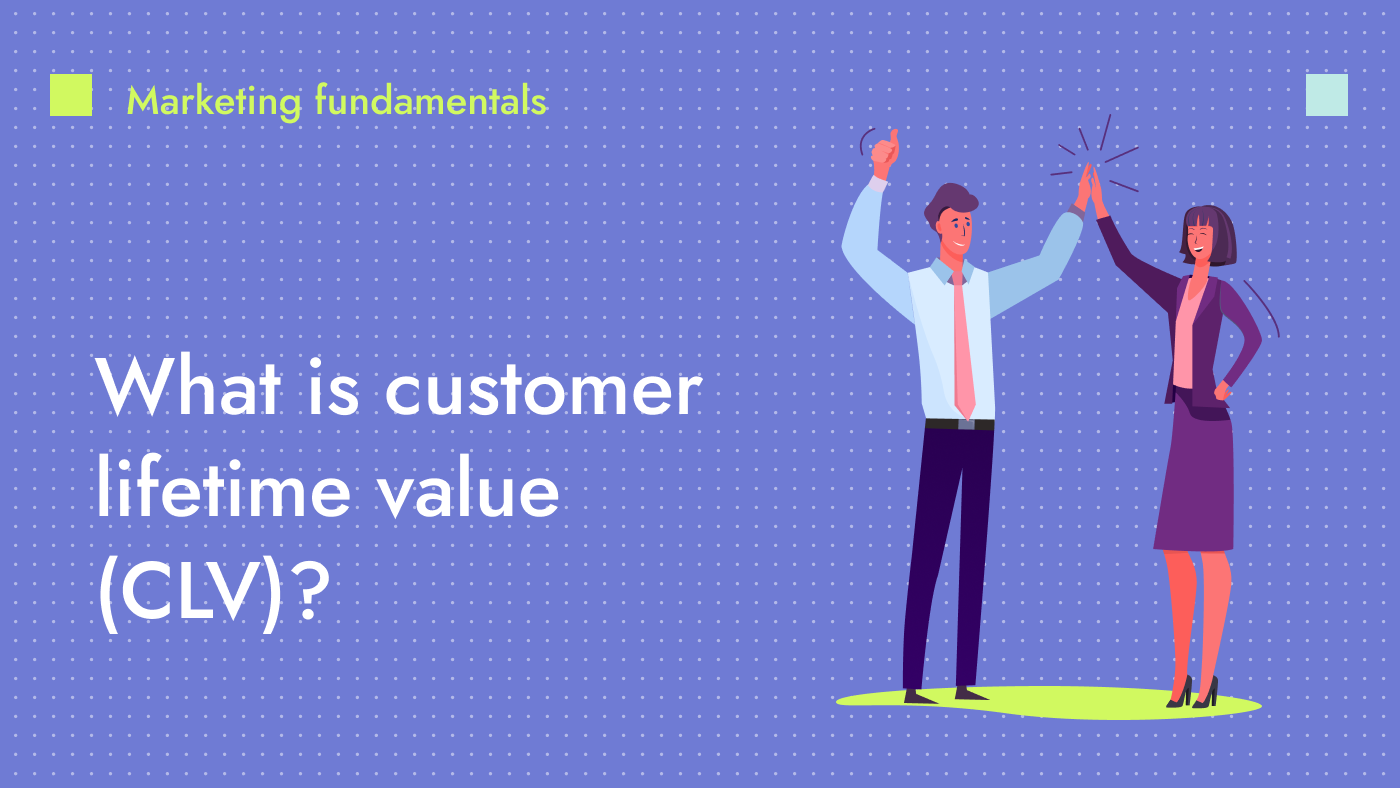Software as a service (SaaS) marketing is any kind of marketing strategy used to promote SaaS products.
It’s a straightforward definition, I know. But there are so many possibilities and ways to approach SaaS marketing that I created this guide to break them down.
The software as a service market size is projected to grow from $315.68 billion in 2025 to $1,131.52 billion by 2032 as more companies move to the cloud. With this expansion, having effective SaaS marketing strategies becomes more important than ever. Gartner notes that many core marketing principles of SaaS, including free trials and product-led growth, were once rare but are now standard in software sales.
Managing a portfolio of B2B SaaS clients worth over $15 billion, our team has seen what works in terms of marketing, what doesn’t and how the best software companies in the industry succeed. Now, I’m sharing those insights with you.
Key highlights:
- SaaS marketing is the strategies and tactics used to promote and sell software as a service products to customers. It focuses on building awareness, acquiring users and retaining them through the subscription lifecycle.
- A mix of organic and paid strategies works best for successful SaaS marketing. SEO, content, paid ads and referrals all drive consistent, high-quality leads for software companies.
- When building your SaaS marketing plan, make room for AI. From helping to automate lead generation to hyper-personalizing campaigns, the technology is making marketing faster and smarter.
How is SaaS marketing different from other industry approaches?
SaaS marketing differs from other marketing approaches because it promotes cloud-based solutions through a recurring revenue model instead of an outright sale — a shift that changed the game.
When SaaS companies first emerged in the late 90s, the subscription model pushed professionals to create new marketing resources beyond the traditional tactics designed for one-time purchases. Instead, marketers would now have to consider the entire customer journey within the product, questioning:
- How do I drive customers to test my product?
- How do I demonstrate value during trials?
- How do I re-engage users through feature updates?
The fact that SaaS is an inherently digital business model also pressured marketers to rethink their strategies. If you’re selling sunglasses, you can simply show people how they look. But software? That’s a tougher sell. Getting people to move through the SaaS marketing funnel required new tactics, like product demos or trials.
Keep learning
Understanding the SaaS marketing funnel
The SaaS marketing funnel is a tool for understanding the journey of possible buyers and how they commit to a SaaS product. It provides great directions for marketers, but it isn’t set in stone. You should adapt the funnel to your company’s needs, especially since it’s not a completely linear journey.
Even though businesses now have access to extensive prospect data (e.g., clicked links or how users engaged with a product or demo request), many interactions with your brand just won’t be tracked. These circumstances are especially true when dealing with a business-to-business (B2B) funnel. Unlike a business-to-consumer (B2C) journey, which tends to be simple and more linear, the B2B route is intricate and may take months of back-and-forth at most stages of the SaaS marketing funnel.
So what are the stages of the SaaS marketing funnel?
From awareness to retention and upselling, the SaaS marketing funnel covers the entire buyer journey, guiding potential users from initial discovery through becoming loyal, high-value users.
Here’s a breakdown:
- Awareness: This stage is about making potential users aware of your brand and the problems you solve. They might discover you through various channels such as paid ads, organic search, social media, content marketing or industry events. The goal is initial exposure and recognition.
- Consideration: Prospects who are now aware of your solution begin to research more deeply. They evaluate your product against competitors, read reviews, watch demos and seek to understand if your offering truly meets their specific needs and budget.
- Trial/demo: Interested prospects move beyond passive research and actively engage with your product through a free trial, a live demo or a freemium version. The goal here is to provide a firsthand experience that showcases the product’s value and builds an emotional connection.
- Activation: The phase is when new users actively start using your product and experience its core value for the first time. It involves guiding them to complete key actions that demonstrate the benefits and solidify their understanding of how the software solves their problem.
- Nurture: Users receive consistent communication through targeted content and support. In this stage, companies address questions and demonstrate additional use cases that reinforce the product’s value proposition.
- Conversion: This is the stage where trial or demo users decide to become paying customers. This typically involves clear pricing, well-timed offers and a seamless purchase process.
- Retention: Keeping existing customers satisfied and engaged requires continuous value delivery through reliable service, regular feature updates, proactive support and building a strong customer relationship.
- Upselling: Once customers are happy and engaged, opportunities arise to expand their usage and increase revenue. This can involve offering premium features, higher-tier plans, add-ons or expanding usage limits based on their needs and usage patterns.
Keep learning
B2C vs B2B SaaS marketing: What’s the difference?
Whether you’re selling software to businesses or directly to consumers, you should adapt your marketing strategies to the intended audience. After all, B2C and B2B models require a distinct approach to attract, engage and convert customers.
While B2C SaaS marketing often emphasizes convenience or entertainment for probable buyers, B2B SaaS marketing focuses on demonstrating tangible business value throughout the whole B2B buyer journey.
| Aspects of the marketing and sales process | B2C SaaS marketing | B2B SaaS marketing |
|---|---|---|
| Targeted audience | Final consumers | Companies (multiple stakeholders are involved, from influencers, IT and economic buyers to entire buying committees) |
| Sales cycle | Short-term sales cycles with consumers often making quick or emotional decisions based on product appeal, price and ease of use | Varied — from a few weeks to several months, depending on product complexity and other negotiation aspects |
| Marketing strategies | Mass-market strategies using popular media platforms like ads for Facebook, Instagram, TikTok or TV | Targeted marketing strategies like account-based marketing (ABM), email marketing, SEO, inbound content, LinkedIn ads and events (e.g., webinars, tradeshows) |
| Product complexity | Products designed for simplicity and ease of use, focusing on affordability and cost-effectiveness | Tailored to businesses’ needs and often more complex and feature-rich (requiring enterprise-grade security and integration with tech stack) |
| Pricing | Generally lower (as consumers are more price-sensitive) | Higher because businesses purchase software at scale, often requiring hundreds or thousands of licenses |
6 steps to creating a SaaS marketing plan
A strong SaaS marketing plan isn’t just about getting leads in the door; it’s about guiding them through trials, demonstrating value and ensuring they stick around. This result requires a clear strategy built on data, competitive insight and a deep understanding of your audience.
Follow these six steps to get started:
1. Do contextual research
Analyze your company’s past performance, your team’s structure and current niche trends. Ensure you also get all the information needed about your product and the pain points it solves. Laying this foundation ensures your approach aligns with business objectives and highlights hidden opportunities for improvement.
Keep learning
2. Map out your SaaS competitors
The next big step you should take is building a competitive matrix to understand where your company stands in the market. This process will provide insights and benchmarks to your SaaS marketing plan so you can set realistic goals for your team.
To guide competitive research, ask:
- How do our direct and indirect competitors position themselves?
- Which marketing channels and strategies are they using successfully?
- How do their pricing, features and customer experience compare to ours?
- What are their weaknesses, and how can we use them to our advantage?
3. Get a deep understanding of who your target audience is
Many SaaS companies only scratch the surface when it comes to understanding what truly drives their most loyal users — a dreadful mistake. Every part of your marketing strategy — messaging, content, ads and even your SaaS product launch — depends on truly understanding your audience. If you don’t know what motivates your customers, you’ll struggle to attract and retain them.
With your SaaS marketing audit, you need to dig deeper into:
- What specific pain points push them to seek a solution?
- How do they research and compare products like yours?
- What platforms, communities or forums do they trust?
- What frustrations lead them to churn?
Next, get your answers by:
- Scheduling customer interviews to understand their pain points, decision-making process and what they love (or don’t) about your product
- Monitoring customer support and sales calls to identify recurring questions and objections
- Checking social media conversations, forums and LinkedIn discussions where your users share feedback
I wouldn’t skip this step until all your team members have a deep understanding of who your target audience is.
Keep learning
4. Define your SMART goals
A SaaS marketing plan for high-growth companies requires intelligent goal setting. After learning about your company’s current context and key audience, use the SMART framework to define objectives for the quarters and the year. Remember that SMART stands for:
- Specific: Detailed outlines of what you want to accomplish (e.g., “Reduce churn by 10%” rather than “Improve retention”)
- Measurable: Progress backed by data
- Achievable: Realistic targets based on resources and market conditions (e.g., “Boost trial-to-paid conversions by 5%,” not “Double conversions over the week”)
- Relevant: Objectives aligned with broader business priorities (e.g., “Enhance onboarding to improve retention” if churn is a key challenge)
- Time-bound: Clear deadlines (e.g., “Raise NPS score by 5 points within six months”)
The takeaway here is that goals should be clear, specific and measurable. “Decrease churn rate by 10% in Q2,” for example, is a far more effective objective than a vague “keep more customers.”
5. Create a structured SaaS marketing budget
Without a well-defined budget, marketing efforts can become scattered, leading to overspending in some areas and underinvesting in others. To create this document, break down allocations by channel — such as product marketing, content, public relations and events — while keeping flexibility for testing and optimizations.
Here’s a simplified example of a SaaS marketing budget for Q1:
| Jan/YY | Feb/YY | Mar/YY | Total Q1 expenses | ||||||
| Budget | Actual $ spent | Budget | Actual $ spent | Budget | Actual $ spent | Budget | Actual $ spent | Amount left | |
| Product marketing | $1,000 | $500 | $1,000 | $500 | $1,000 | $500 | $3,000 | $1,500 | $1,500 |
| Content marketing | $1,000 | $500 | $1,000 | $500 | $1,000 | $500 | $3,000 | $1,500 | $1,500 |
| Public relations | $1,000 | $500 | $1,000 | $500 | $1,000 | $500 | $3,000 | $1,500 | $1,500 |
| Events | $1,000 | $500 | $1,000 | $500 | $1,000 | $500 | $3,000 | $1,500 | $1,500 |
| Other | $1,000 | $500 | $1,000 | $500 | $1,000 | $500 | $3,000 | $1,500 | $1,500 |
| Total | $5,000 | $2,500 | $5,000 | $2,500 | $5,000 | $2,500 | $15,000 | $7,500 | $7,500 |
In a McKinsey survey, 45% of the CFOs mentioned the lack of a clear line to value was the reason to decline or not fully fund a marketing proposal. So, yes, providing a clear view of your investments is important, but go beyond. You need to make it clear to stakeholders why you’re suggesting this financial plan — and what its outcomes are. Again, ensuring your SaaS marketing plan aligns with company goals is key for this when getting buy-in for your initiatives.
Now, if you’re wondering how much SaaS companies spend on marketing, take a look at other industry data benchmarks, like this SaaS marketing periodic table. According to this study, the marketing spend of SaaS companies varies based on annual recurring revenue (ARR):
- For companies with less than $10M ARR, marketing spend typically stays below 80% of new logo ARR
- For those with more than $10M ARR, it generally remains under 70%
If you’re new to this, read
6. Make room for AI in SaaS
There’s no escaping it: generative AI is everywhere. According to a Deloitte report about the impact of gen AI in marketing and sales, top use cases include:
- Identifying patterns in customer interactions
- Optimizing content delivery
- Enhancing cross-sell and up-sell opportunities
- Guiding prospects through product discovery (using chatbots)
- Improving campaign performance tracking with real-time insights
For SaaS leaders, looking for ways to integrate AI into their marketing stack isn’t just an advantage — it’s a matter of survival in a rapidly evolving market. In fact, AI startups are proving that automation and data help lean teams achieve what once required the work of entire departments, creating a new standard for efficiency and impact.
The best SaaS marketing strategies to generate leads
Even though lead generation is not the only goal when doing marketing for SaaS companies, it’s still the baseline for your sustainable growth.
That’s why you should implement these SaaS marketing strategies to fuel your pipeline.
1. Produce content that speaks to your audience’s pain points
A content marketing strategy remains one of the most effective ways to educate and convert potential SaaS customers. And we at Productive Shop know this firsthand. We test, refine and implement organic strategies for technology companies — day in and day out.
Take a look at our proven B2B SaaS content writing process.
SEO-optimized content and website pages
Web search optimization is one of the most cost-effective ways for SaaS companies to generate traffic and high-intent leads. Optimizing your web pages and publishing educational blog posts that address industry trends, forward-thinking ideas and common customer pain points positions your SaaS as a thought leader while increasing organic traffic.
My favorite strategy? SEO writing.
Yes, people do still read blogs — and these assets indeed help SaaS businesses increase visibility, create demand and attract leads. By investing in SEO-optimized blog writing, SaaS Alerts increased organic traffic by 85%, boosting their online share of voice.
Gated content
By offering high-value resources like ebooks, whitepapers or in-depth reports in exchange for contact information, you attract engaged prospects while building your email marketing list.
The key to this strategy’s success is making sure your piece of content is a valuable enough resource to justify the exchange — users should feel they’re getting insights they can’t easily find somewhere else. Check out this example from Mural.
Corporate podcasts
Corporate podcasts have become a powerful way to engage SaaS audiences with audio marketing. This format provides long-form, conversational content that builds trust over time. You can use podcasts to establish authority, introduce new features and create a community around your product.
“Marketing Against the Grain” is a great example from HubSpot. On air since 2022, the podcast speaks directly to HubSpot’s target audience of marketing leaders.
Making a podcast from scratch often requires time, resources and technical expertise. Using text-to-speech tools like Voice Insert for podcasting, you streamline this process. Whether you’re repurposing blog content into audio, generating previews or refining messaging before recording, Voice Insert allows you to produce quality episodes in just a few clicks.
Case studies
Case studies provide real world examples of how your SaaS product solves problems, showcasing measurable results that resonate with potential customers. Incorporating case studies across SaaS marketing channels — on landing pages, in sales conversations or within email campaigns — reinforces trust and accelerates the decision-making process, especially in B2B.
You can use our B2B SaaS case studies page as a reference for insights on how we showcase the impact of our solutions.
2. Run creative ad campaigns
Cost-per-click (CPC) ads can also drive targeted visitors to your SaaS product. Experimenting with Google Ads, social media ads or programmatic advertising helps you capture high-intent leads and even reinforce organic rankings by increasing engagement.
Choosing the right audience, crafting compelling ad copy and constantly A/B testing creatives will help improve performance and traffic. But equally important is where you send that traffic — a well-optimized landing page can make or break your campaign. If your ads drive traffic to a slow, cluttered or irrelevant page, conversion rates will suffer.
The Slack trial page is an example of an effective landing page that focuses only on one conversion point, signups. The page has quality content that is not overwhelming and showcases social proof through badges of well-known brands, establishing authority and building trust with users.
Keep learning
3. Incentivize referral
People trust recommendations from their peers, making referrals a high-converting channel that requires minimal spending. For companies embracing product-led growth, referrals are a natural extension of a great user experience.
When customers find value in your product, they’re more likely to share it with their network — especially if there’s an incentive like discounts, extended trials or account credits. See how Hiver does it.
SaaS marketing challenges you may encounter and how to overcome them
Now let’s take a look at common SaaS marketing challenges that companies face — and our proven tactics to overcome them.
1. Figuring out which channels to focus on
Spreading efforts too thin across multiple channels can dilute the impact of your campaigns and exhaust your resources. Research where people with your ideal customer profile are spending their time online and experiment with various channels, but closely monitor key performance indicators to understand where to invest your marketing dollars.
One way to refine your approach is by applying the Pareto Principle, which suggests that 80% of your results typically come from 20% of your efforts. In SaaS marketing, this means that a small number of channels may drive the majority of your conversions. Instead of trying to be everywhere, identify the highest-performing platforms and double down on what’s working.
2. Converting freemium users to paid customers
Freemium models attract a large number of visitors, but if users don’t quickly see the value of your product, they may abandon it or continue using only the free version.
When dealing with this issue, optimize your onboarding experience to showcase core features and drive early engagement. Use intent data to implement email sequences, in-app prompts and limited-time premium trials to encourage upgrades.
3. Aligning sales and marketing teams
In many SaaS companies, sales and marketing teams still operate in silos, leading to misaligned messaging, poor lead handoff and lost revenue opportunities. Marketing may generate MQLs that sales deem unqualified, while sales might not be effectively approaching the leads marketing brings in.
I can’t stress this enough — clear communication between sales and marketing is non-negotiable. Regular meetings and shared KPIs ensure both teams are aligned on goals and lead qualification criteria. Defining what makes a lead sales-qualified (SQL) and creating a feedback loop where the sales team provides insights on lead quality can drastically improve conversions.
4. Measuring your campaigns
According to a Gartner survey, 48% of marketers aren’t able to prove the value of their marketing campaigns. This is a major challenge, especially in SaaS, where long sales cycles and multiple touchpoints make attribution complex. Without clear measurement, it’s difficult to justify marketing spend, optimize strategies or demonstrate impact to stakeholders.
So equip your team with the skills they need to track and optimize your SaaS marketing campaigns. Continuous learning through workshops, certifications and hands-on experience with analytics tools will keep your strategy sharp and results-driven.
Key SaaS marketing metrics to track
Even the most thorough SaaS marketing plan can fall short without the right data. By prioritizing relevant business metrics, SaaS leaders can ensure their efforts are not just generating awareness but actually converting users and driving sustainable growth.
Let’s take a quick look at SaaS marketing metrics you should prioritize:
- Website traffic (branded and non-branded): The number of visitors to your site. This metric indicates brand awareness and top-of-funnel demand, helping SaaS marketing leaders assess the impact of their SEO-optimized content calendar and paid campaigns.
- Conversion rate: The percentage of visitors who take a desired action (e.g., signups, demo requests). A high conversion rate signals effective messaging, user experience and lead nurturing.
- Customer acquisition cost (CAC): The total cost of acquiring a new customer. Lowering CAC improves profitability and ensures sustainable growth.
- Monthly recurring revenue (MRR): Predictable monthly revenue from subscriptions. Tracking MRR helps you measure growth, forecast revenue and evaluate marketing impact.
- Customer lifetime value (CLV): The total revenue a business earns from a customer over time. A high CLV justifies spending more on acquisition and retention efforts.
- Customer retention: The percentage of customers who continue using the product over time. High retention means strong engagement, lower churn and long-term revenue stability.
- Return on investment (ROI): This metric measures marketing profitability by comparing revenue generated to costs. A positive ROI ensures efficient budget allocation and scalable growth.
Keep learning
Get the best B2B SaaS marketing strategies with Productive Shop
If you’re a B2B SaaS founder navigating the complexities of marketing or a new CMO trying to prove why SaaS strategies matter — Productive Shop is the right team to help.
As a B2B growth agency for SaaS companies, we provide services that include SaaS marketing audit, web design and development, website support, SEO consultancy, content writing and more. But don’t worry, we’re not just another agency churning out generic content and surface-level strategies. We’ve helped our clients generate over $60 million in yearly revenue — without spending a cent on paid ads. Our approach is data-driven, strategy-first and built for software sales impact.
Let's be your SaaS marketing partner.



